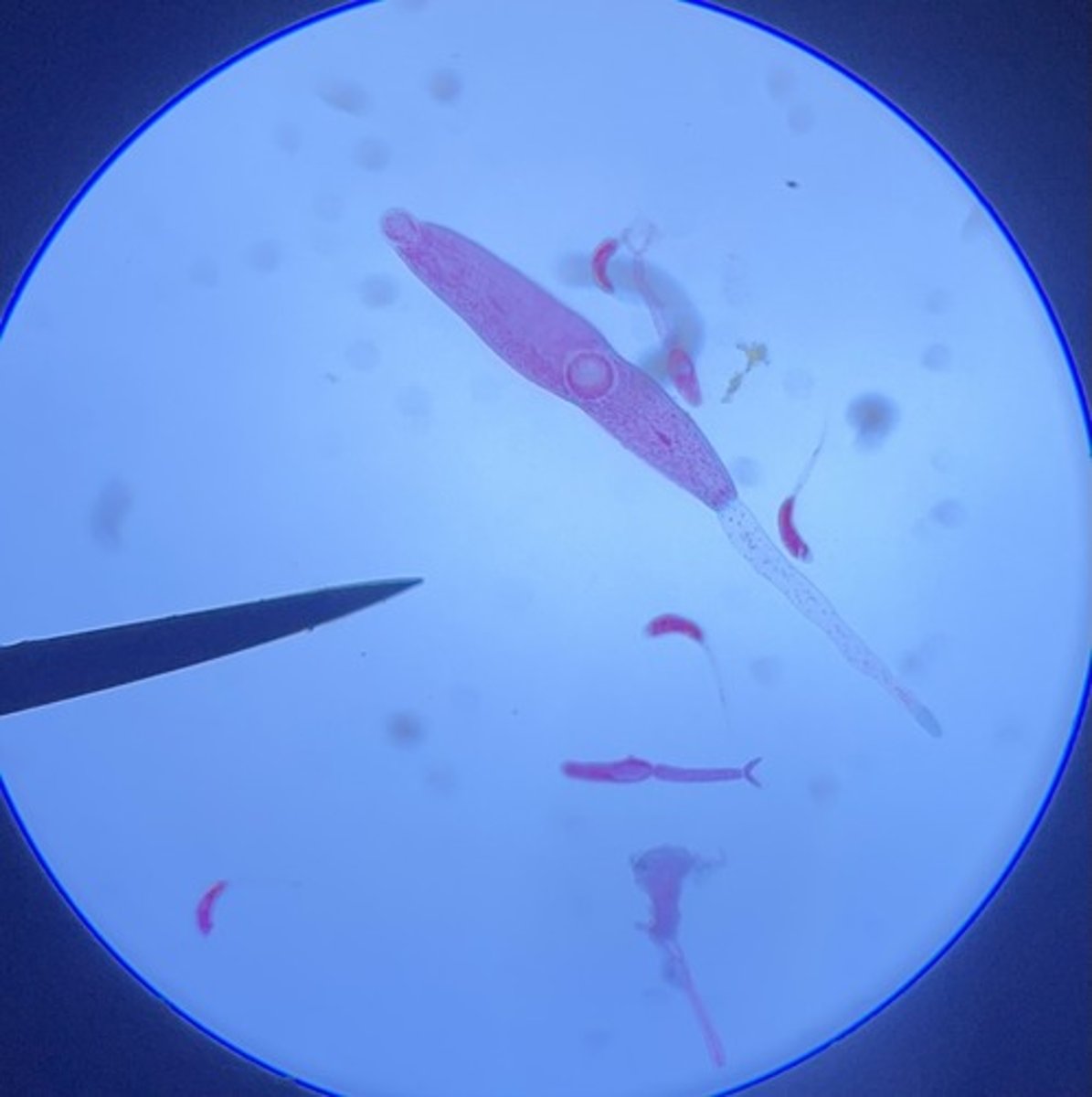Lab 9 Platyhelminthes
1/29
There's no tags or description
Looks like no tags are added yet.
Name | Mastery | Learn | Test | Matching | Spaced |
|---|
No study sessions yet.
30 Terms
Phylum Platyhelminthes
this phylum is made of flatworms

Genus Dugesia
Phylum Platyhelminthes
Class Turbellaria
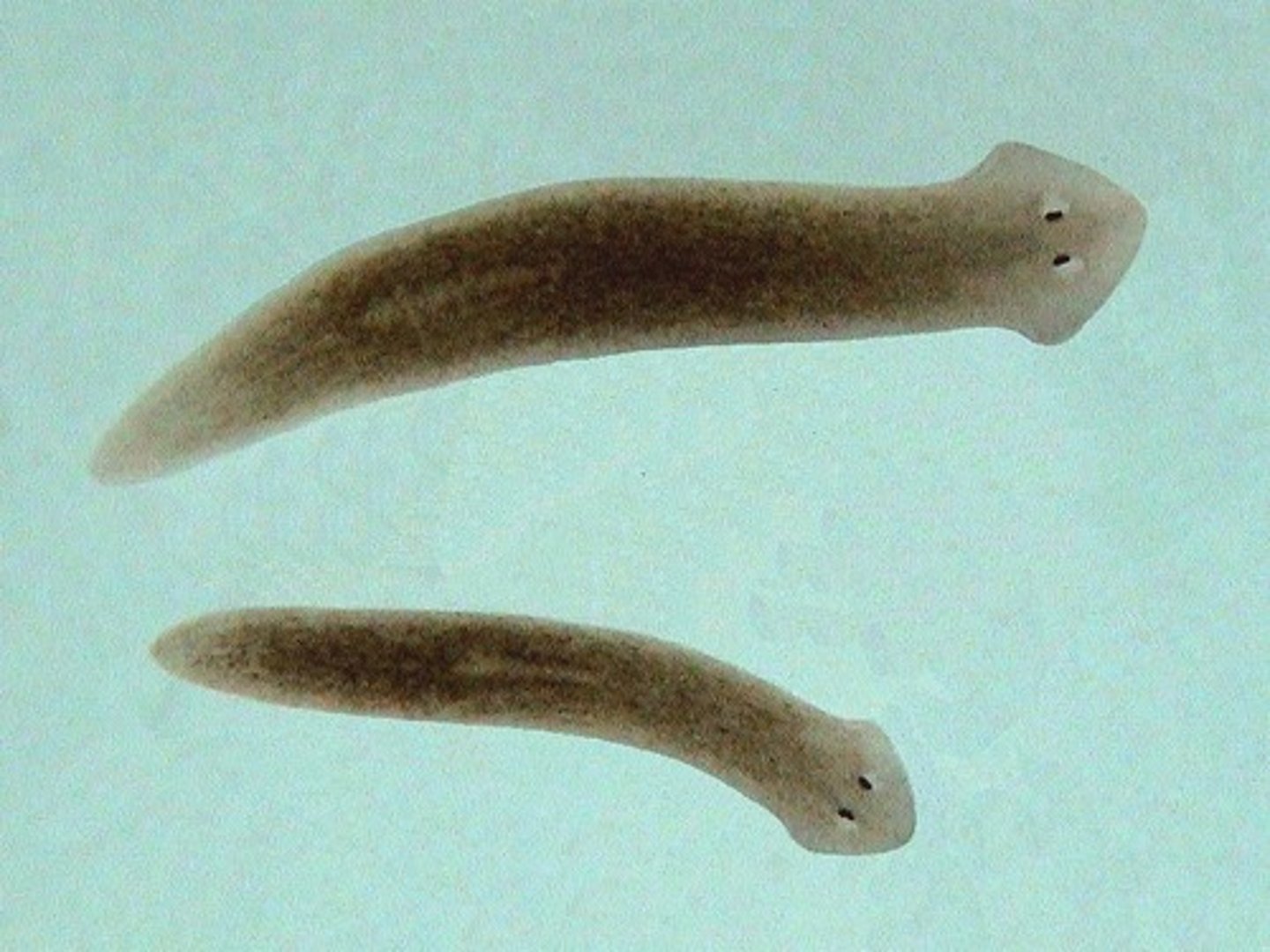
bilateral symmetry
Body plan in which only a single, imaginary line can divide the body into two equal halves.
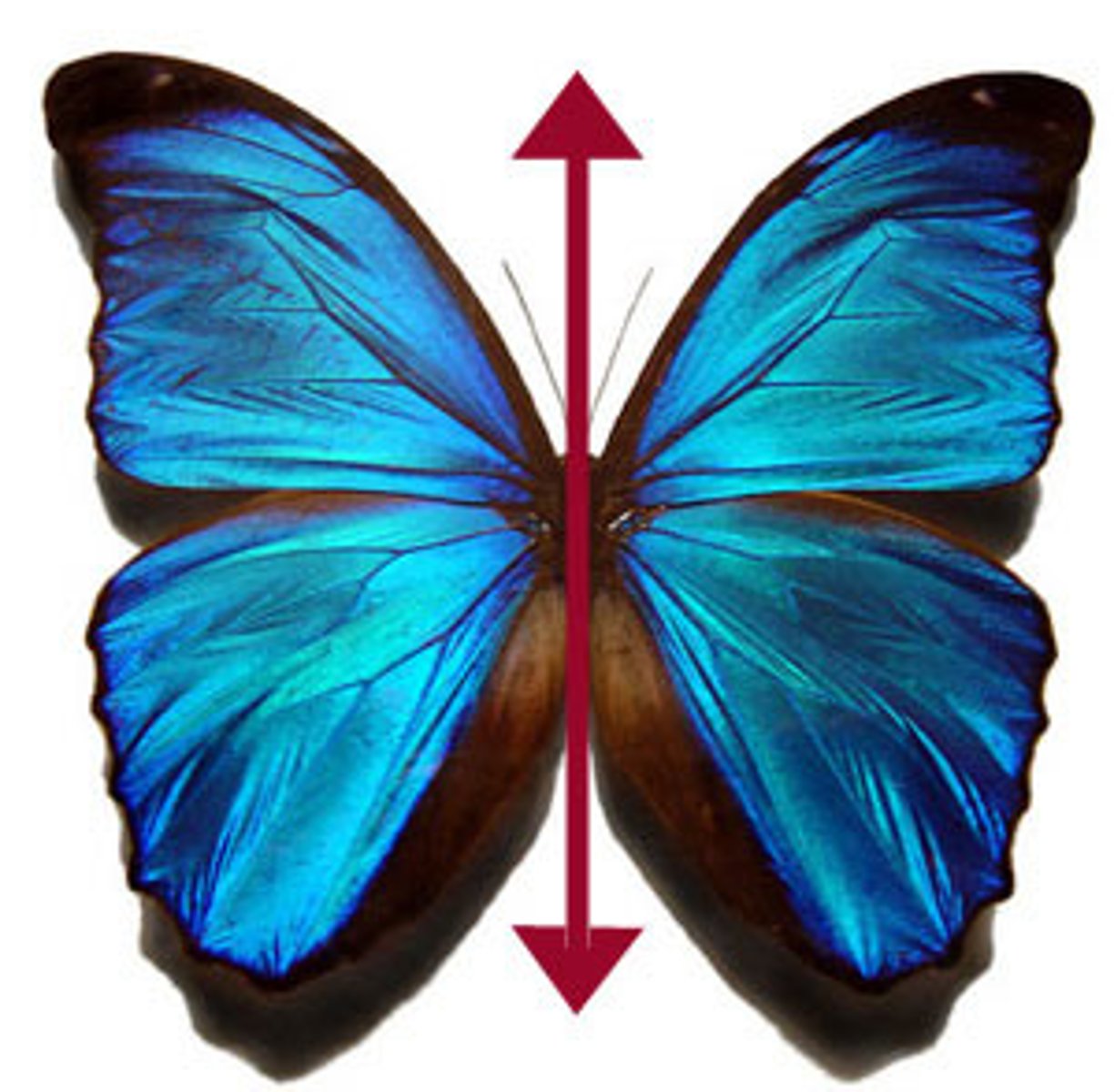
gastrovascular cavity
term for a Digestive chamber with a single opening, in which cnidarians, flatworms, and echinoderms digest food
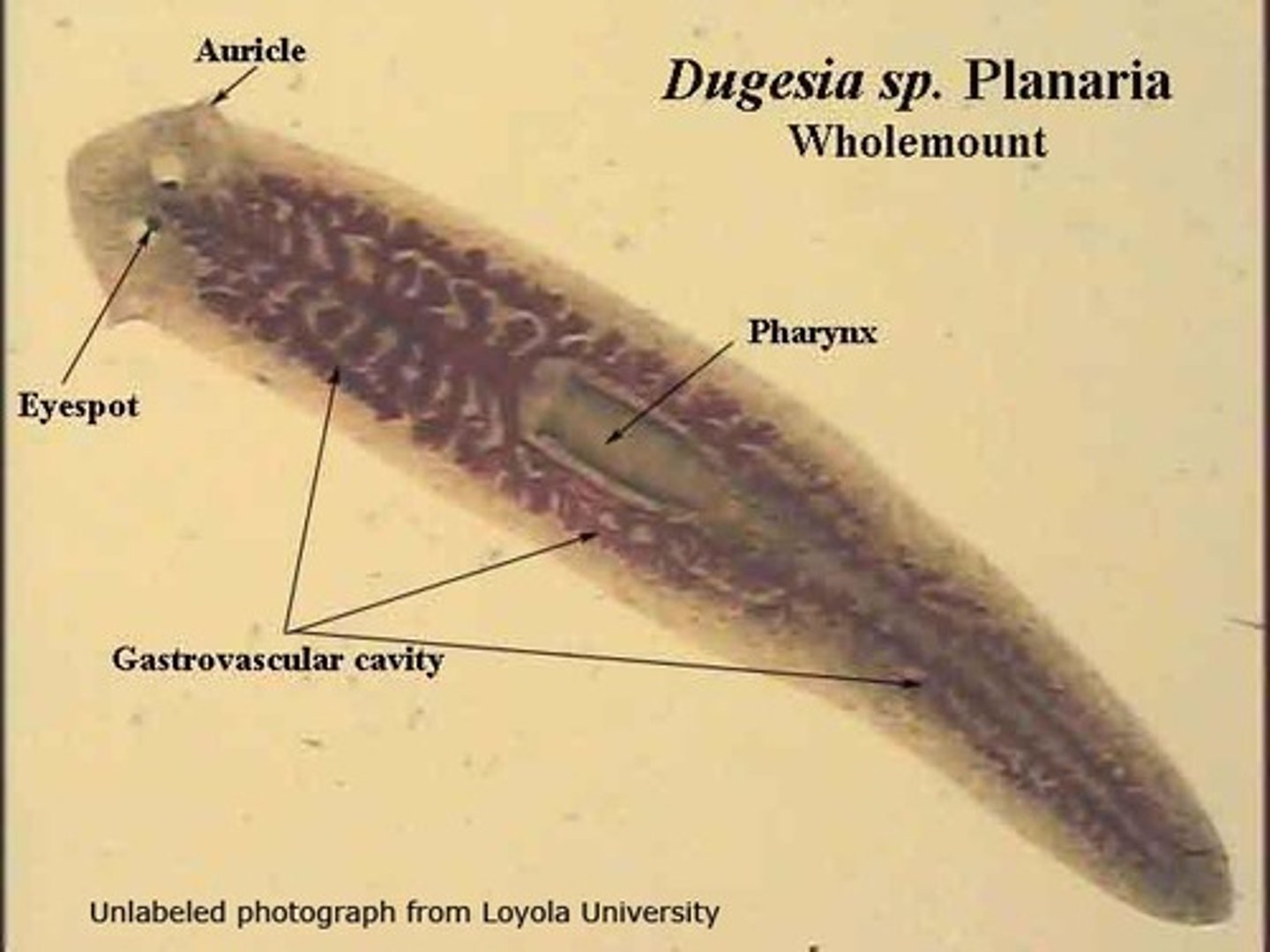
triclad gut
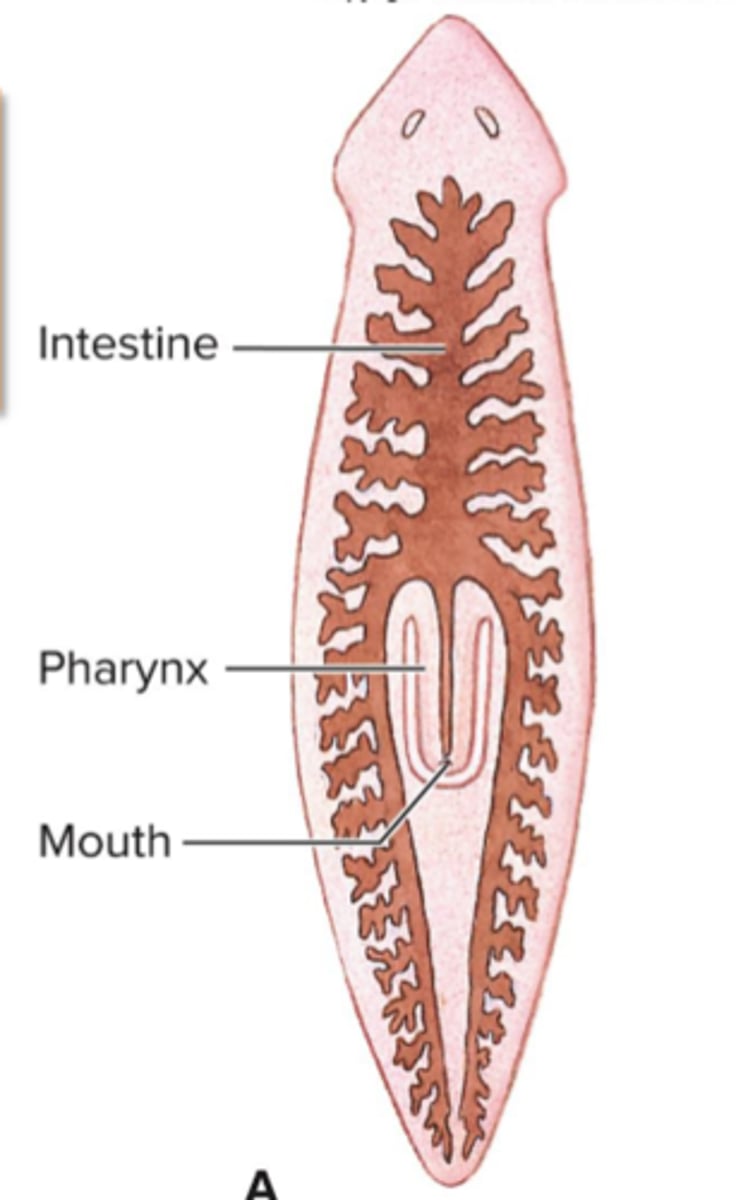
Pharynx
the membrane-lined cavity behind the nose and mouth, connecting them to the esophagus.
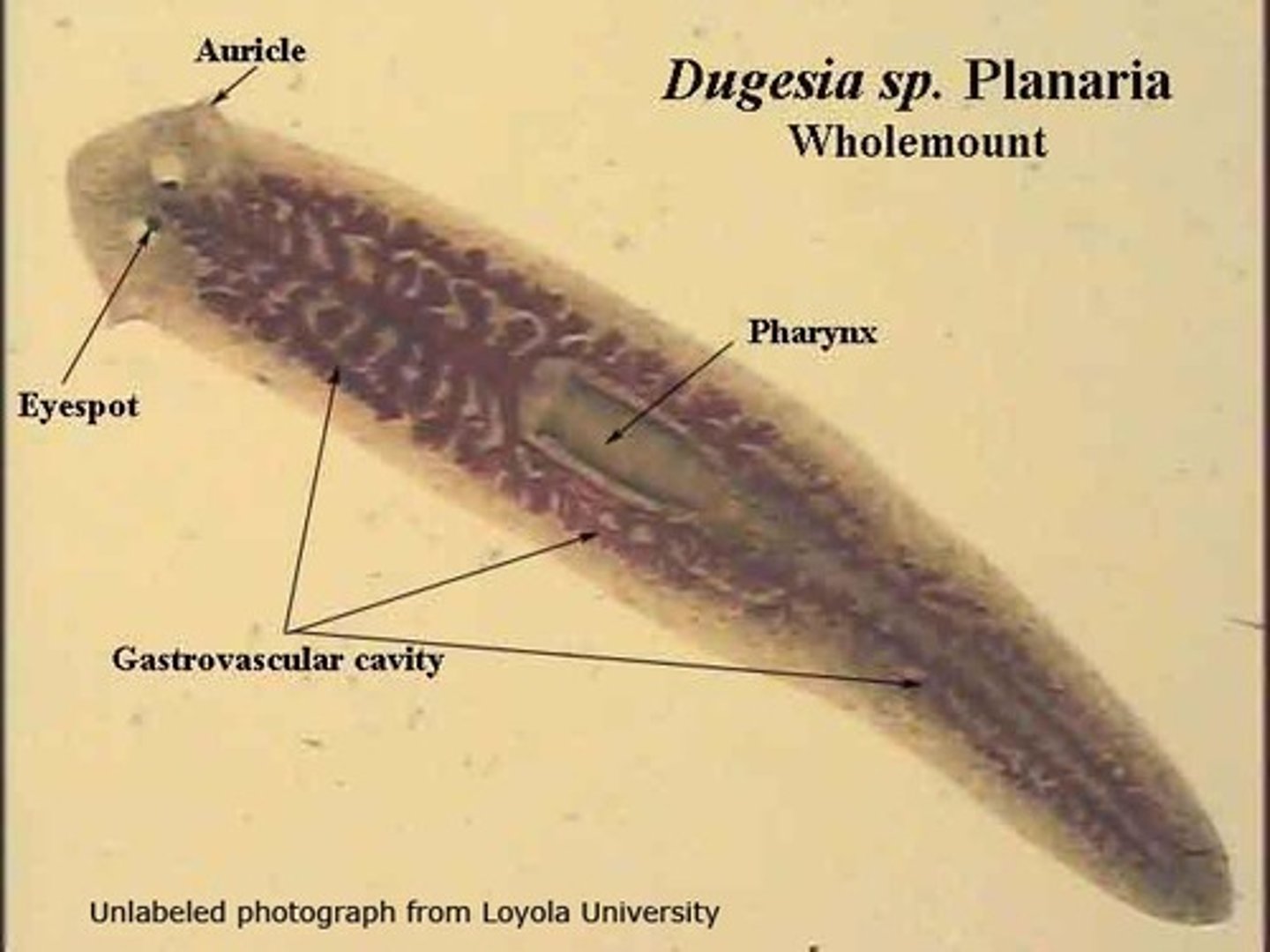
Auricles
ear-like projections, sensitive to chemicals and touch

Eyespots
sensory structure that determines intensity and direction of light
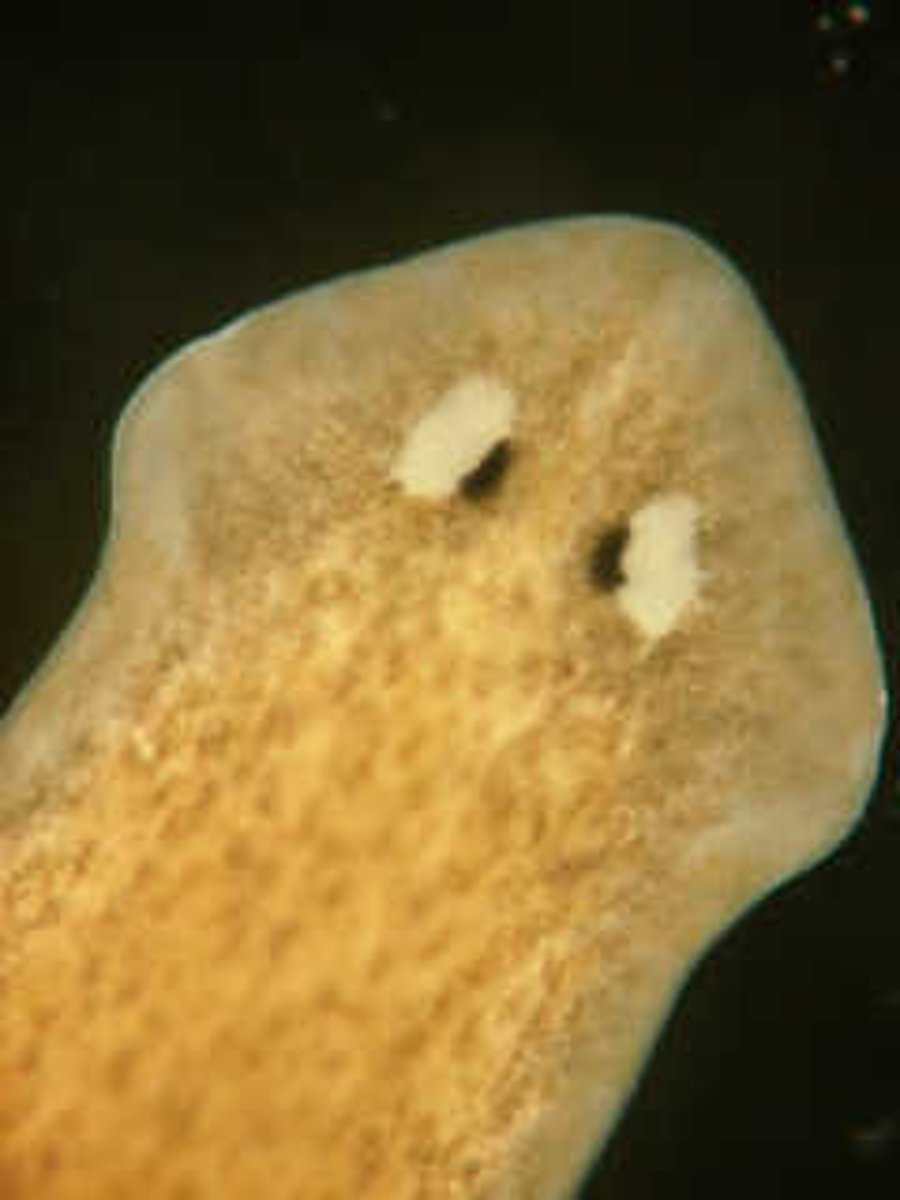
Dugesia cross section
-triploblastic

gastrodermis
this lines the gastrovascular cavity
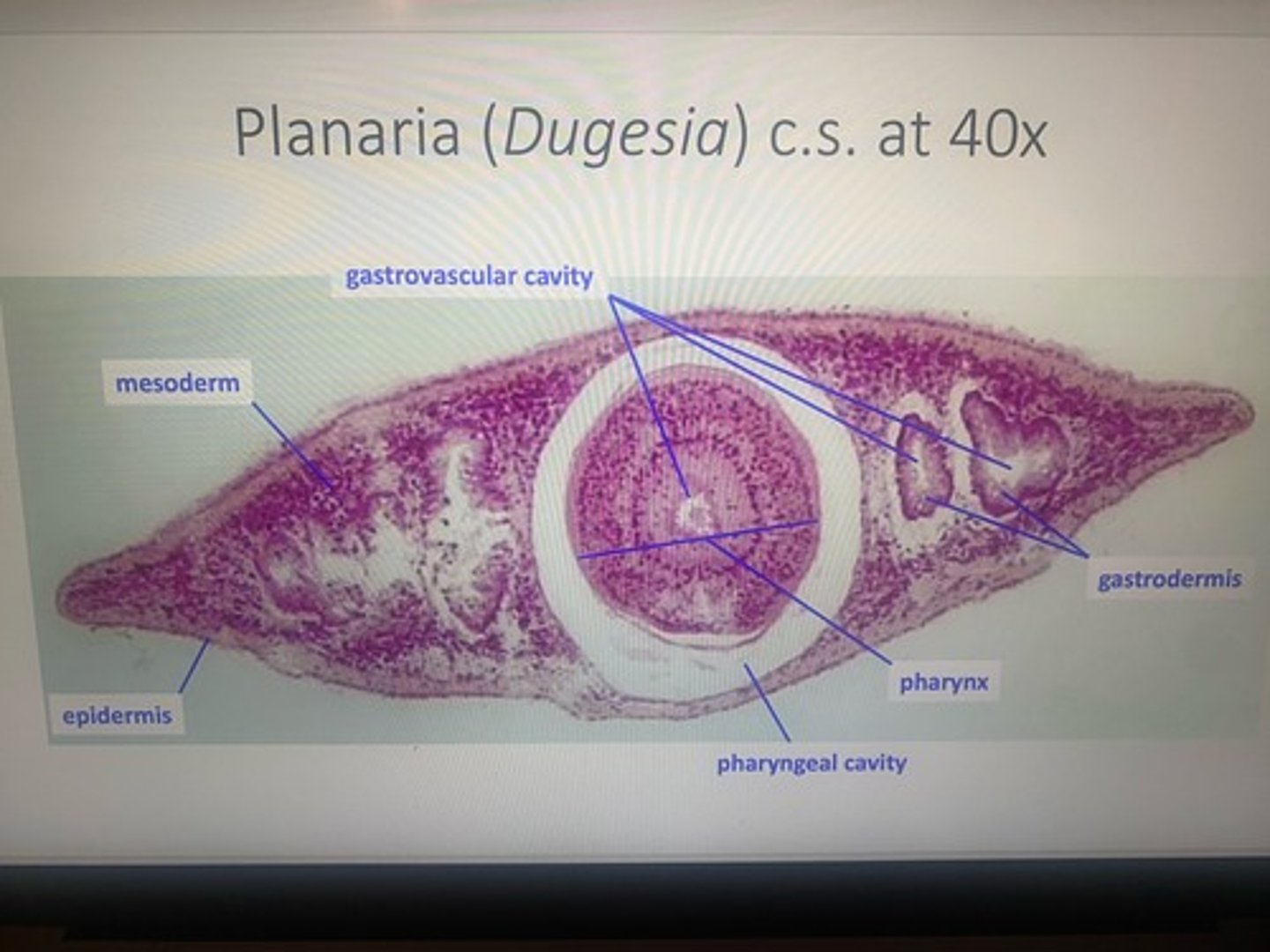
Mesenchyme
This is a jellylike substance that separates the epidermis from the inner cells
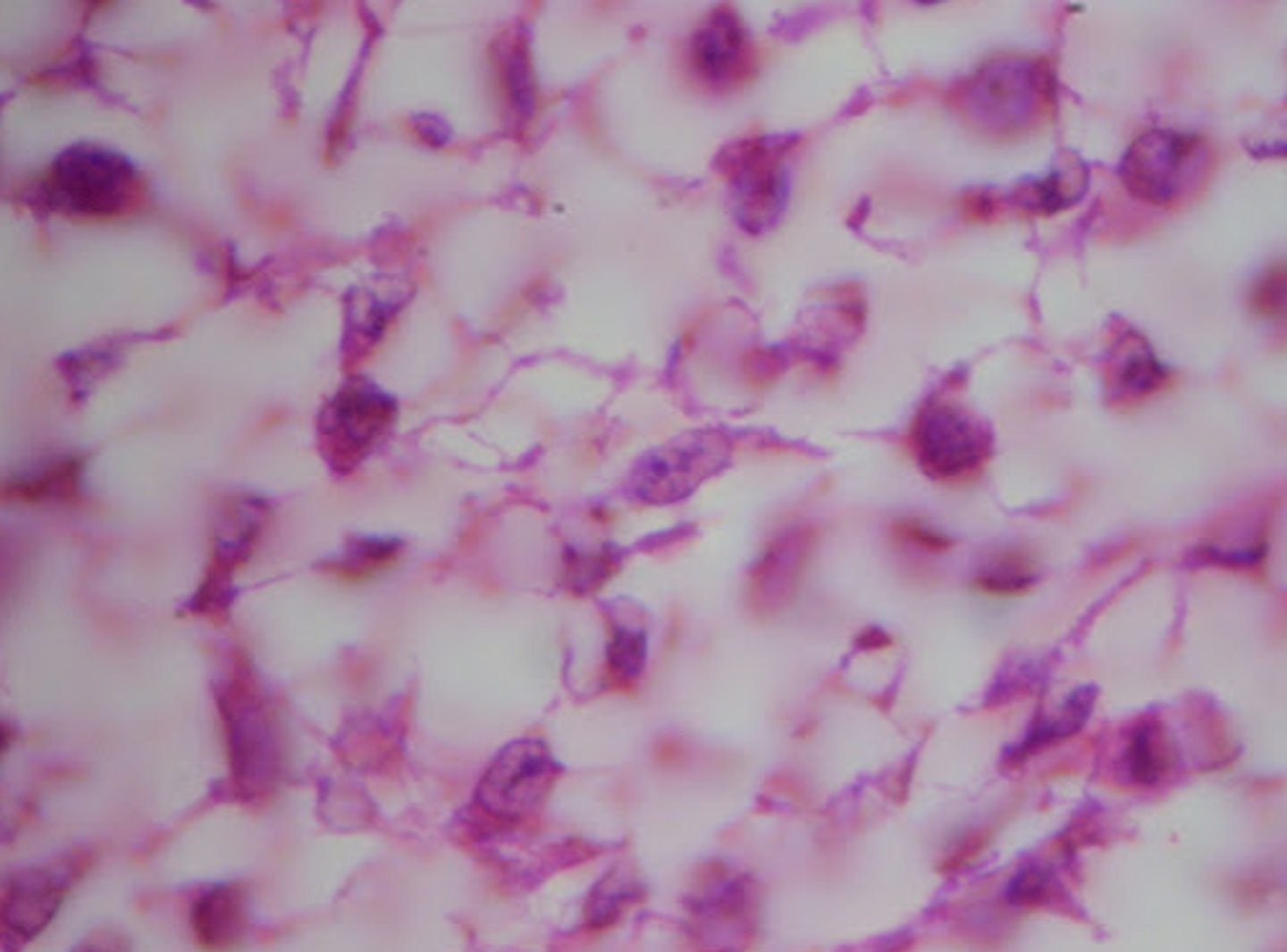
pharyngeal cavity
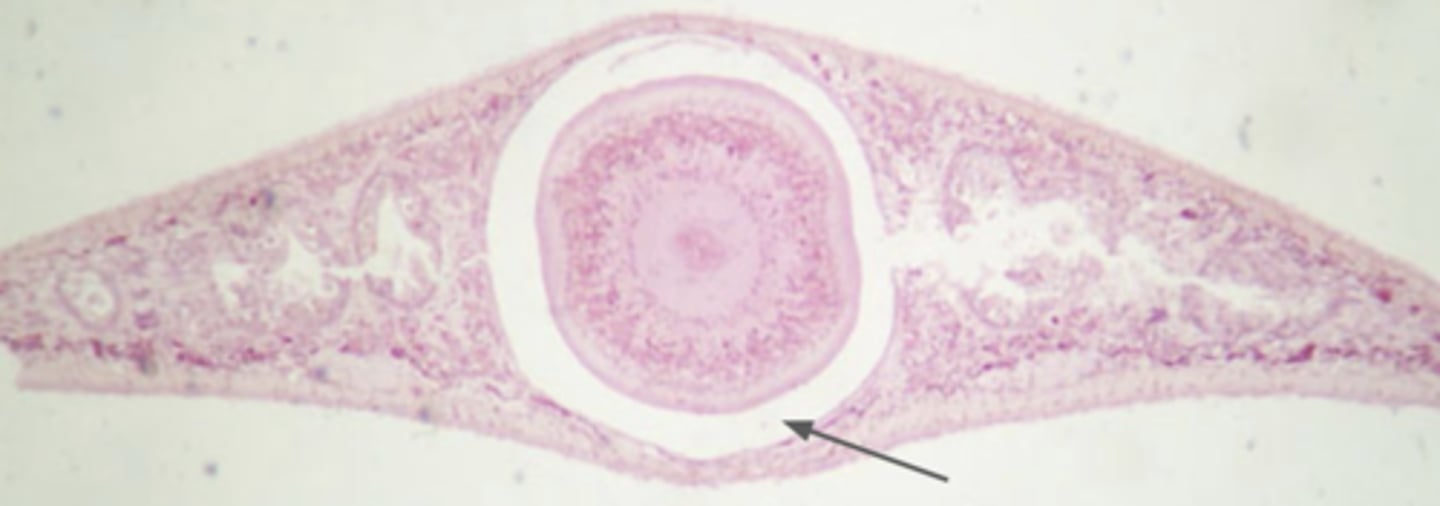
Dorsoventral muscles
used to flatten the body
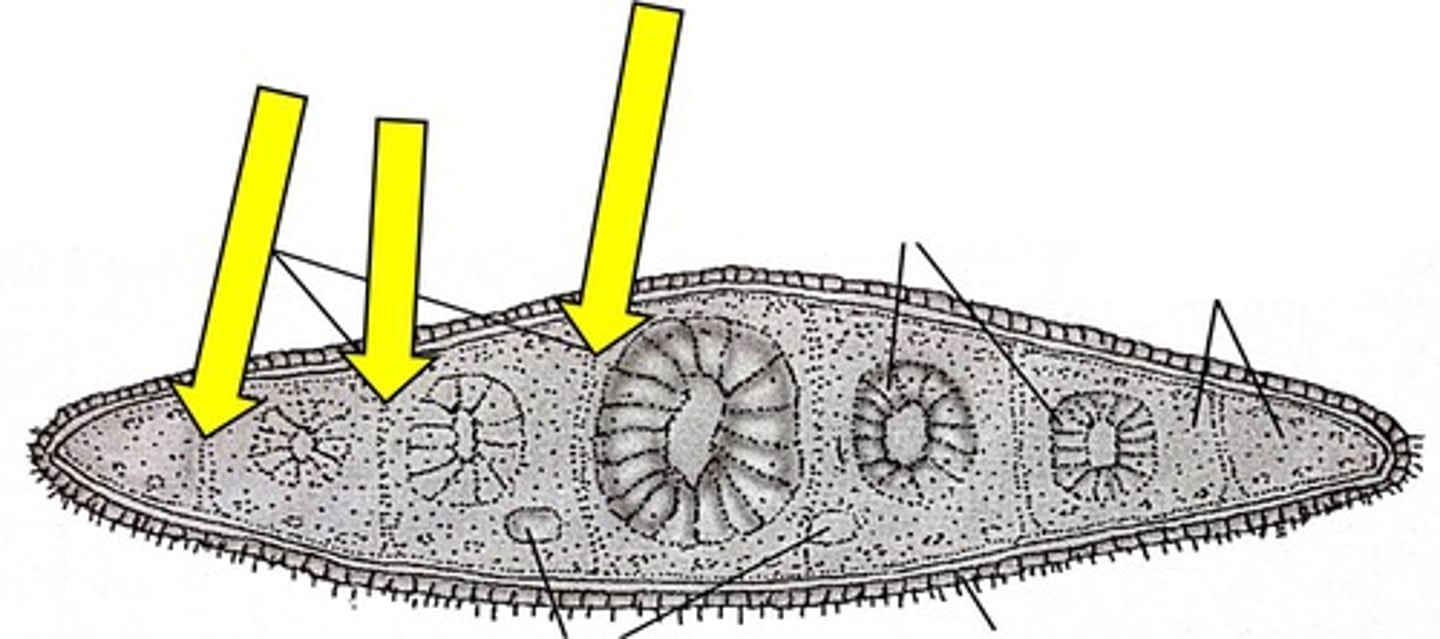
Genus Clonorchis
Phylum Platyhelminthes
Class Trematoda
-chinese liver fluke
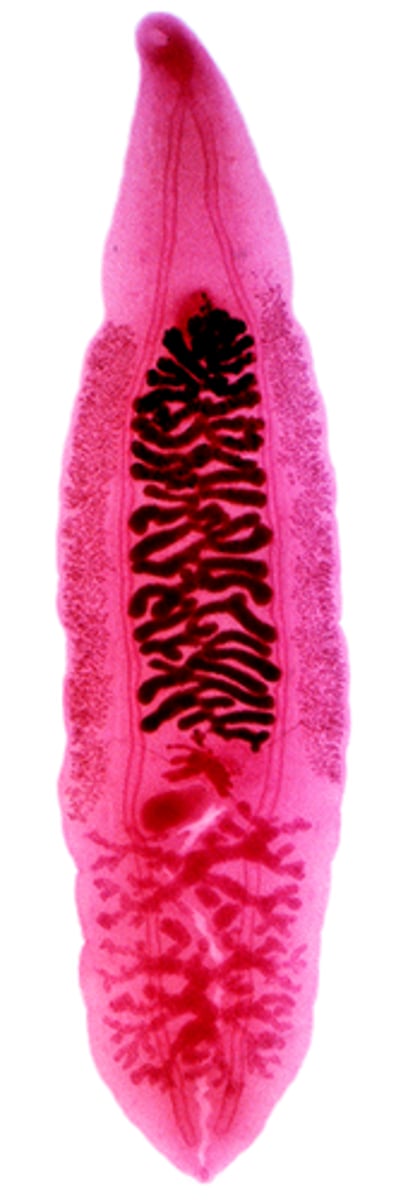
Cercaria larva
tadpolelike larva of trematodes
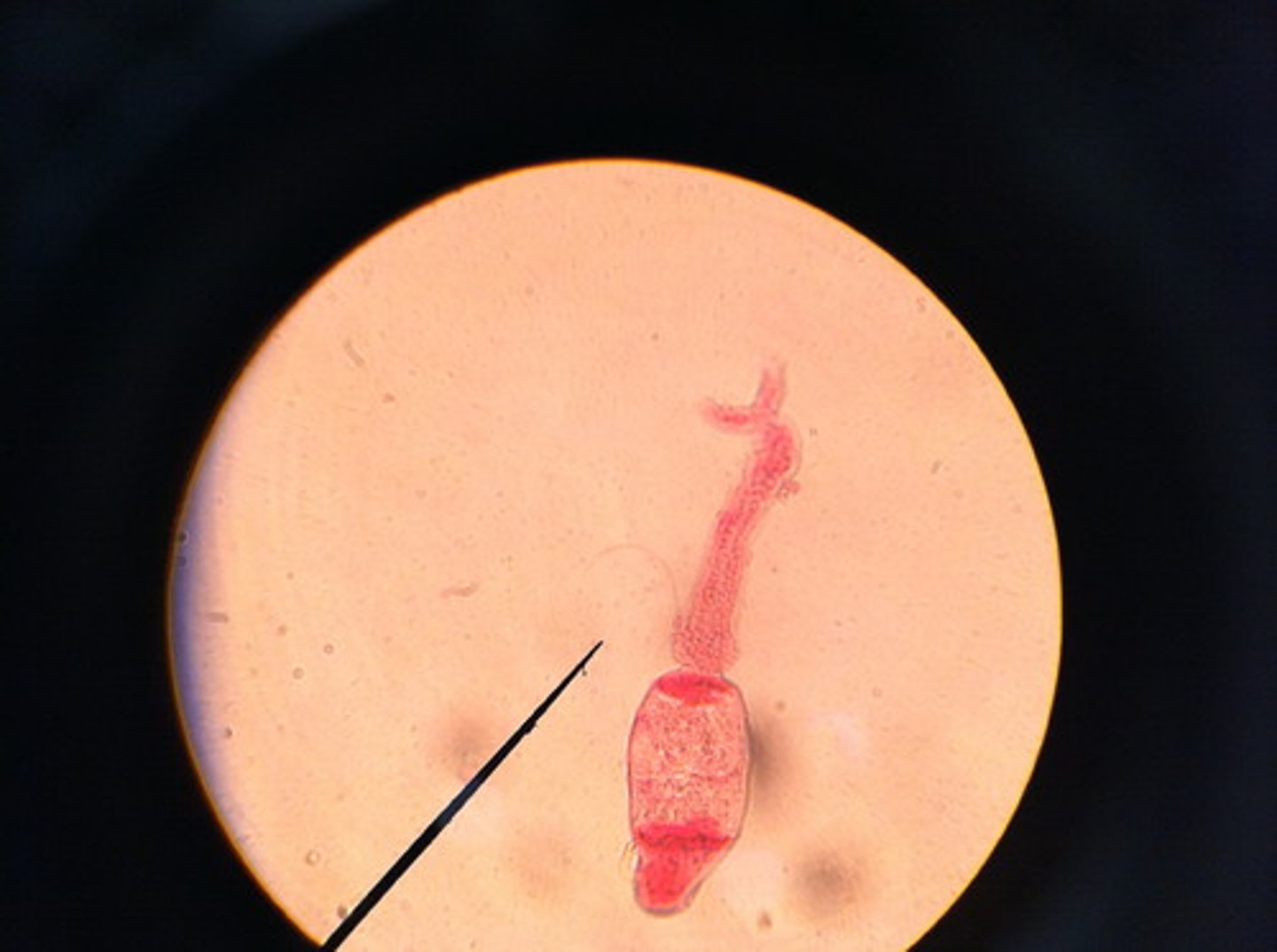
Metacercaria larva
Cercaria larva sheds its tail after attaching to a host then turns into this
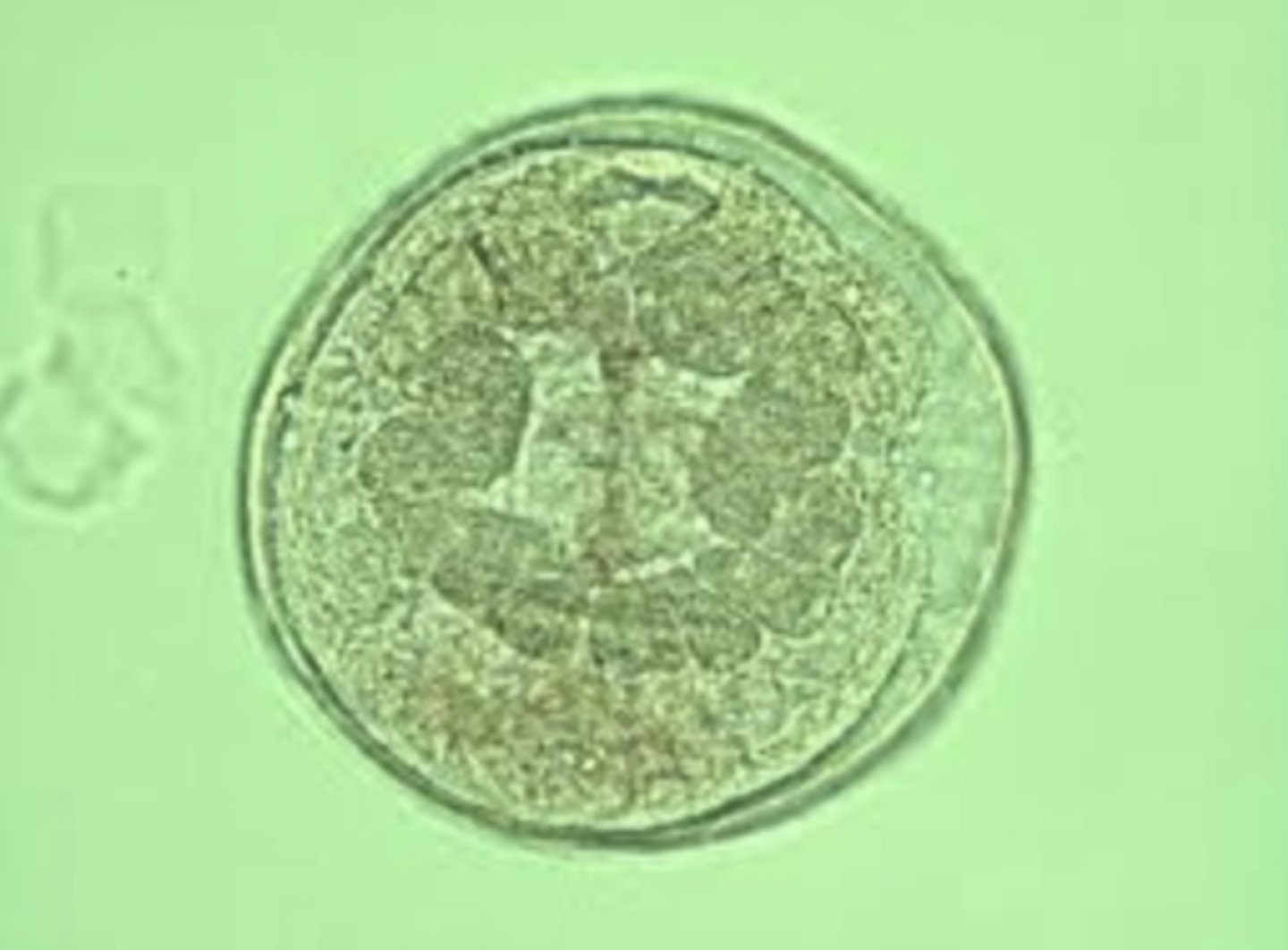
Clonorchis life cycle
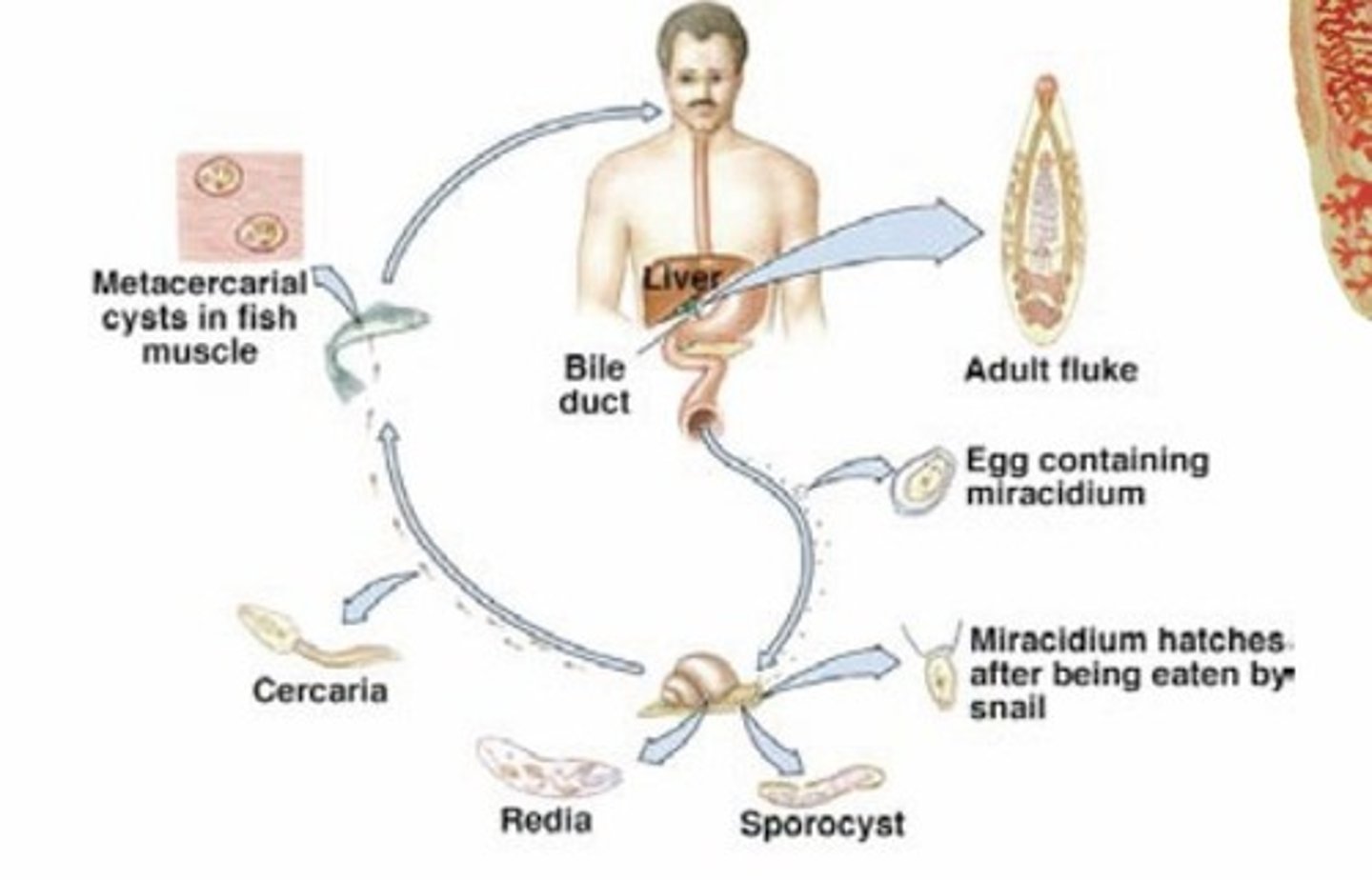
Ventral sucker
term for organ used for attachment to a host found on the lower or abdominal surface of some flukes
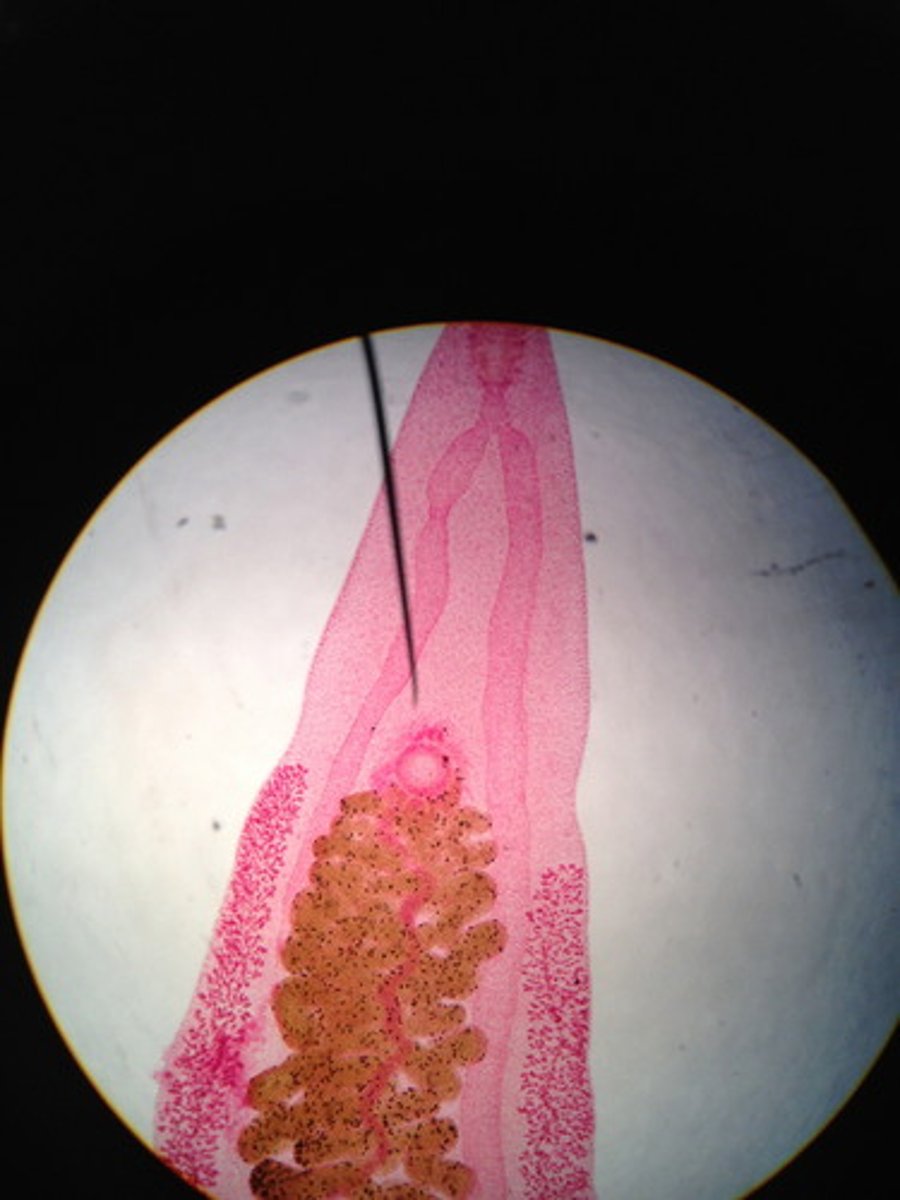
Pharynx (clonorchis)
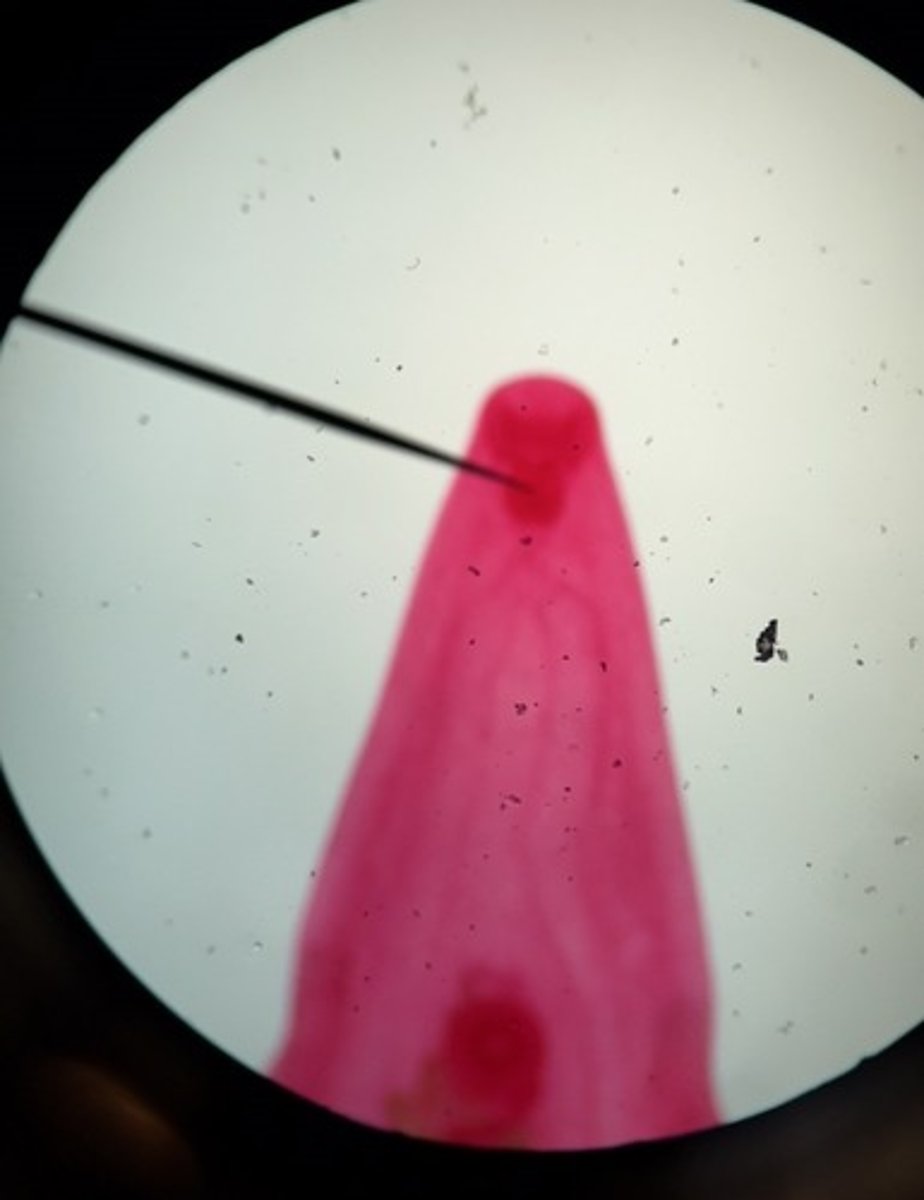
Esophagus (clonorchis)
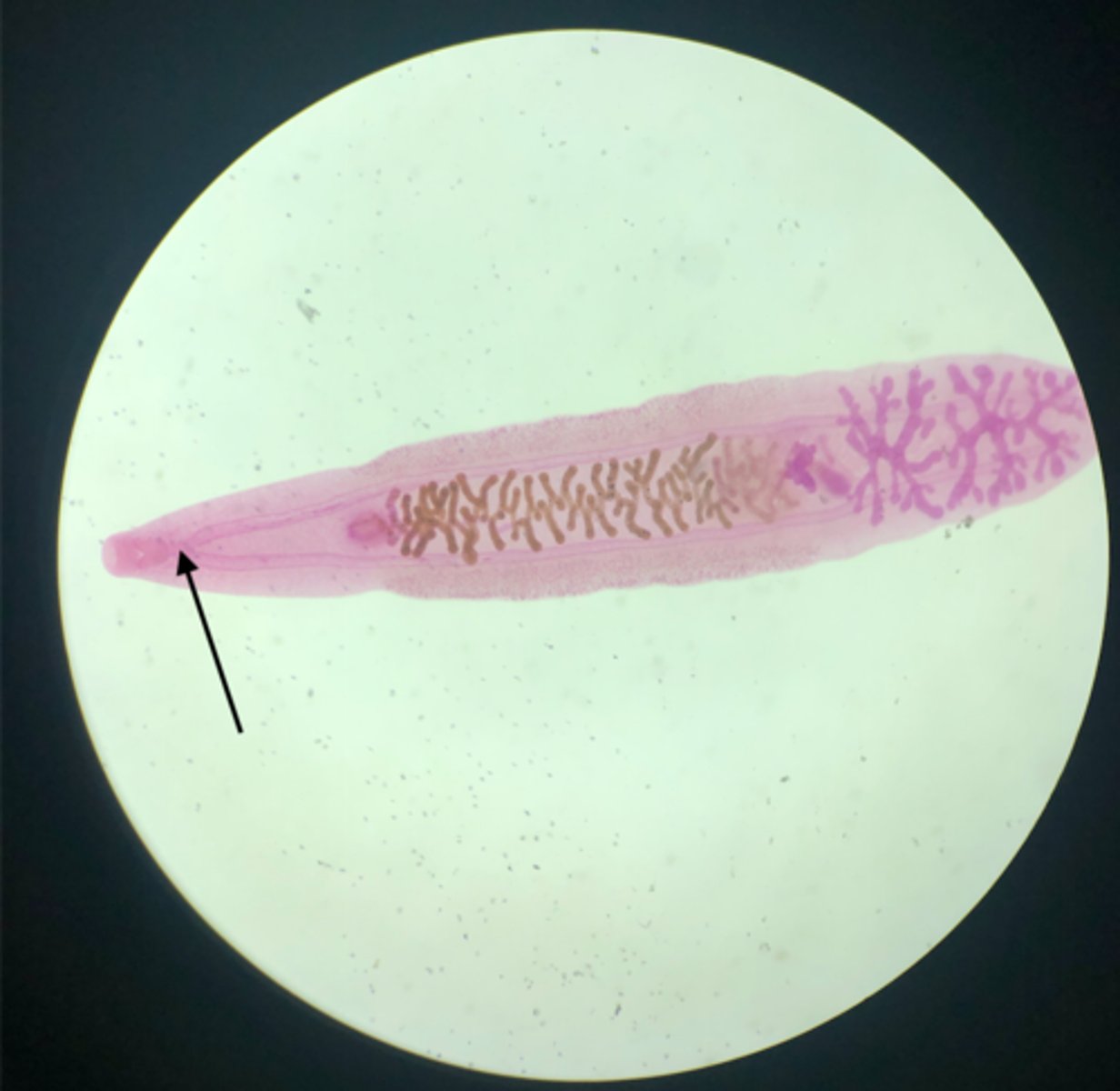
yolk glands (clonorchis)
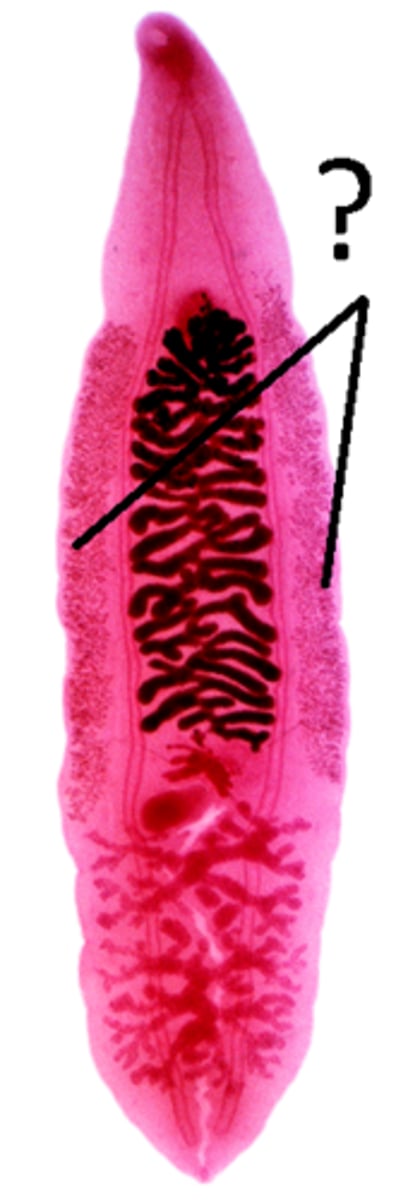
ovary (clonorchis)
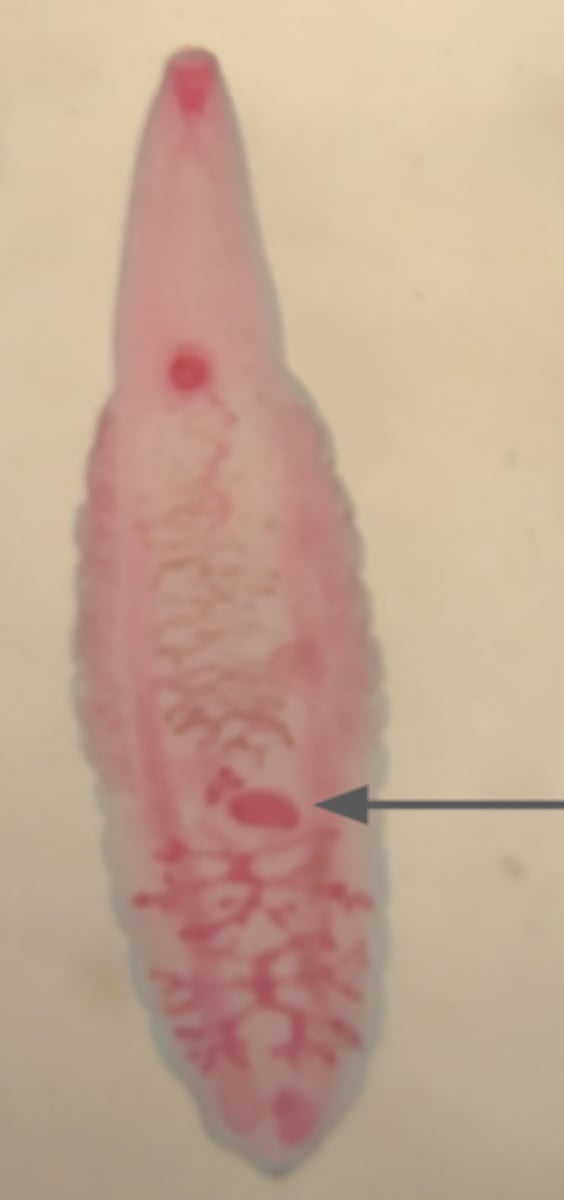
Testes (clonorchis)
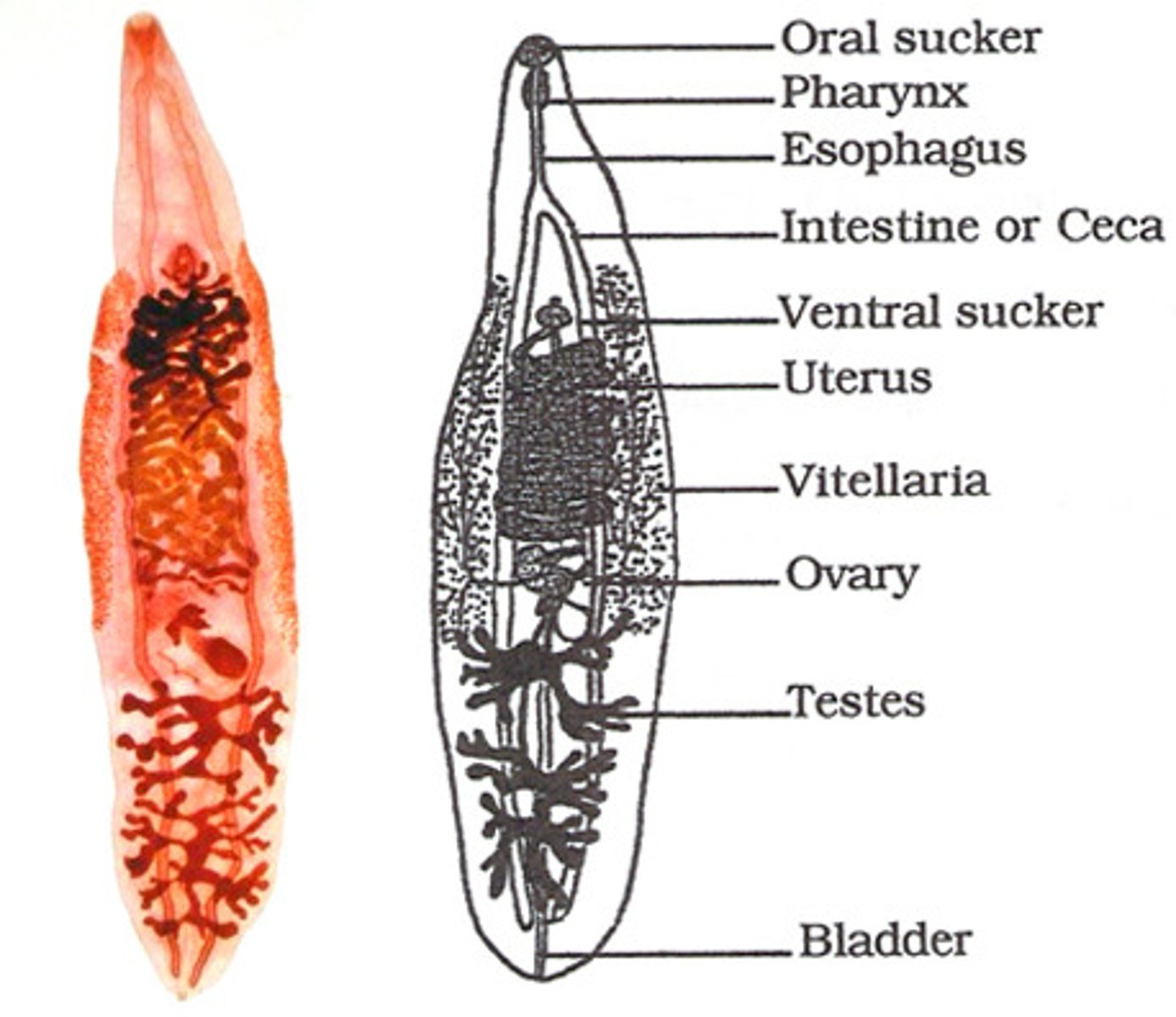
Genus Taenia
Phylum Platyhelminthes
Class Cestoda

Scolex
head of tapeworm

immature, mature, gravid proglottid
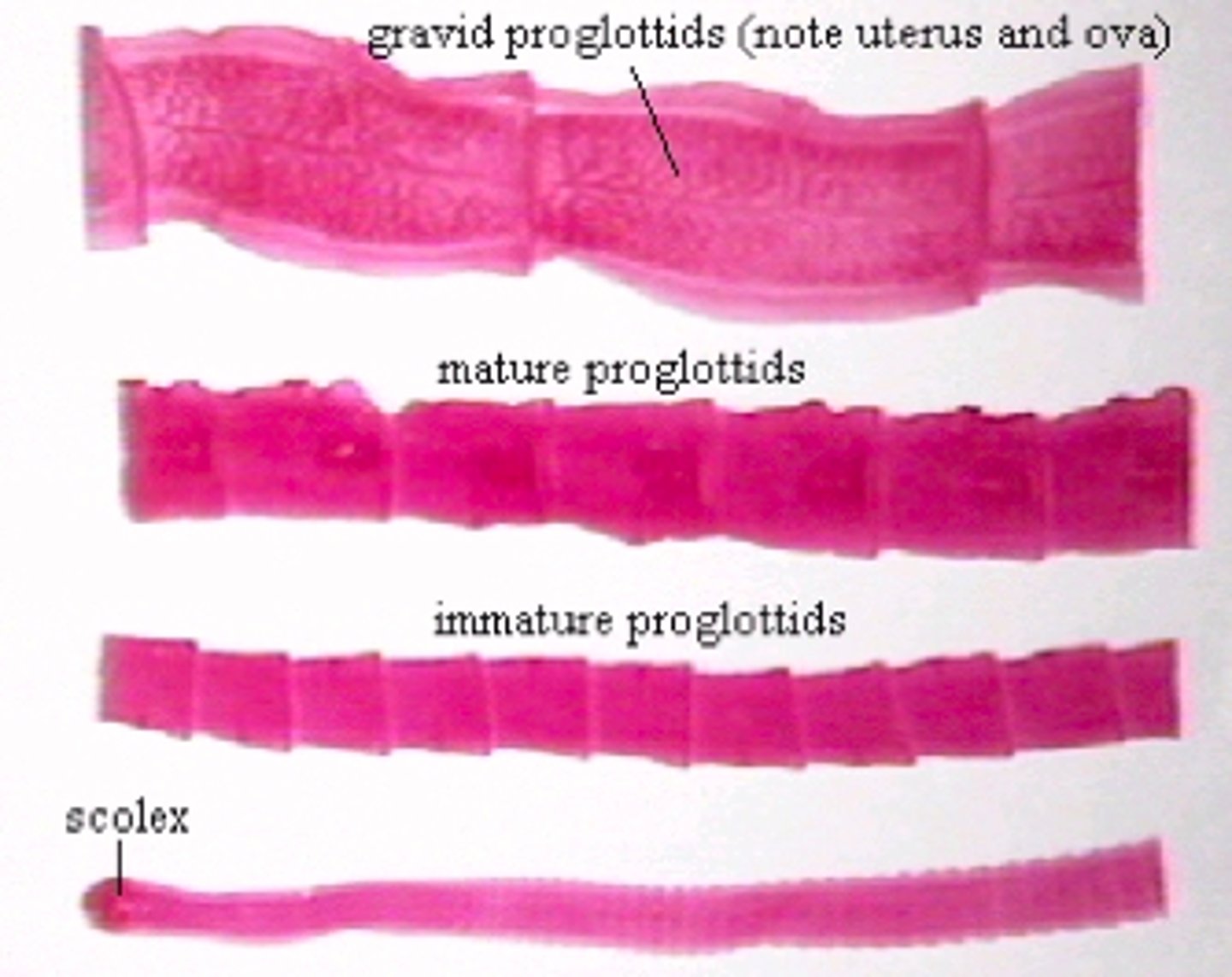
Ovary (Tapeworm)
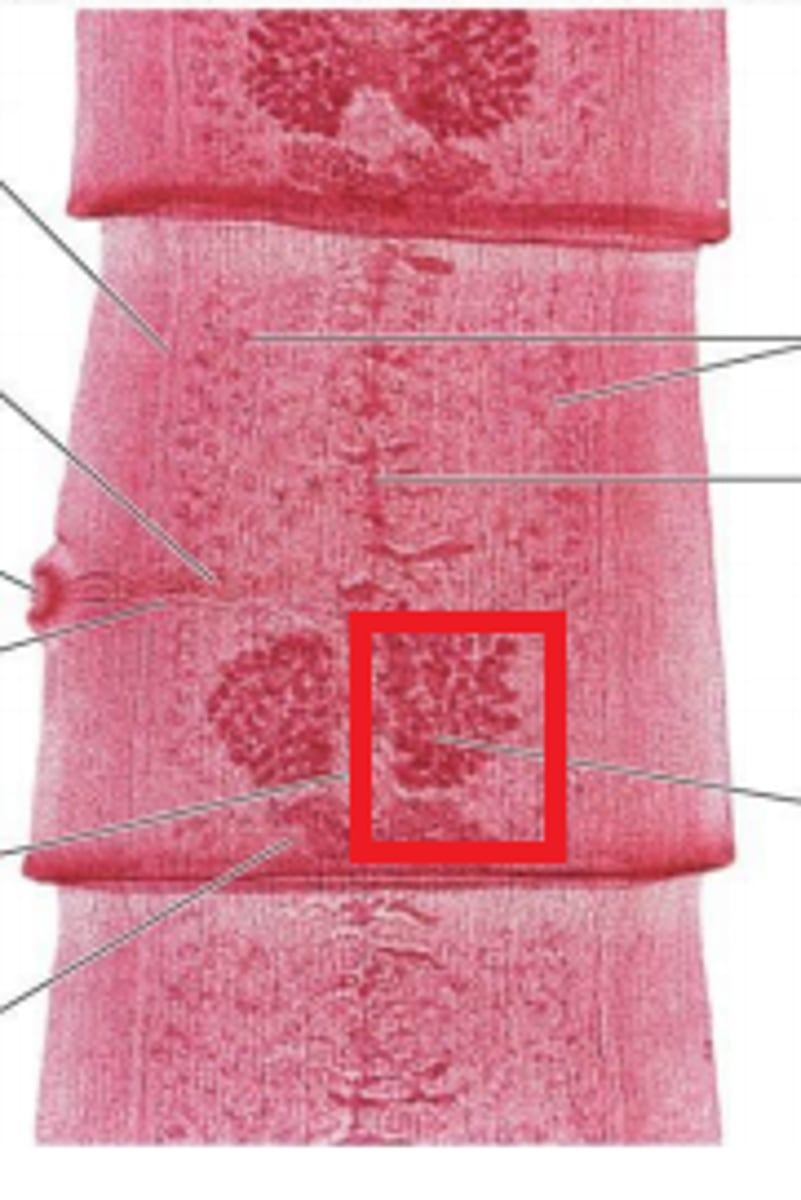
Tapeworm reproductive organs
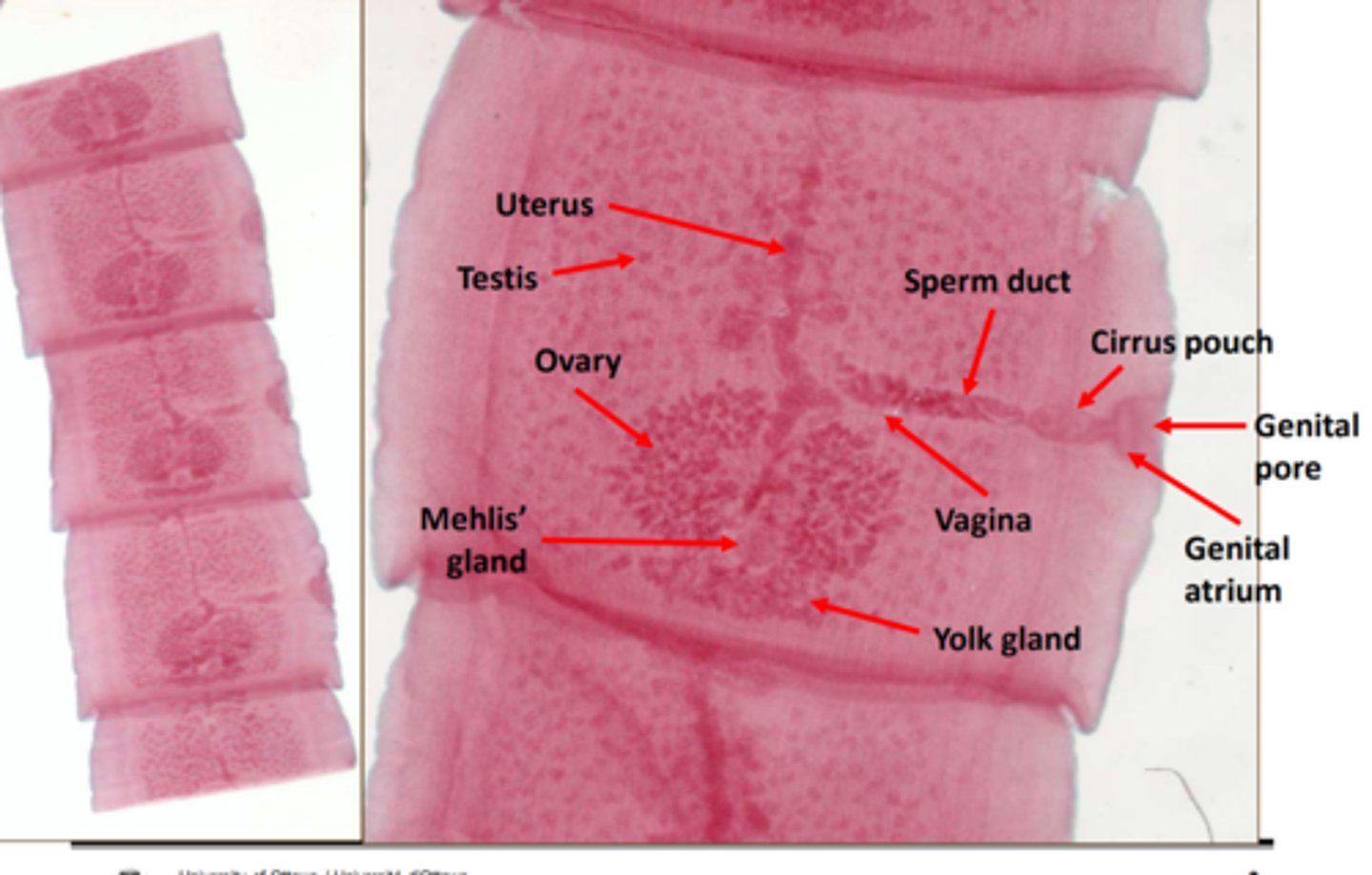
Fasciola hepatica (sheep liver fluke)
Phylum Platyhelminthes
Class Trematoda
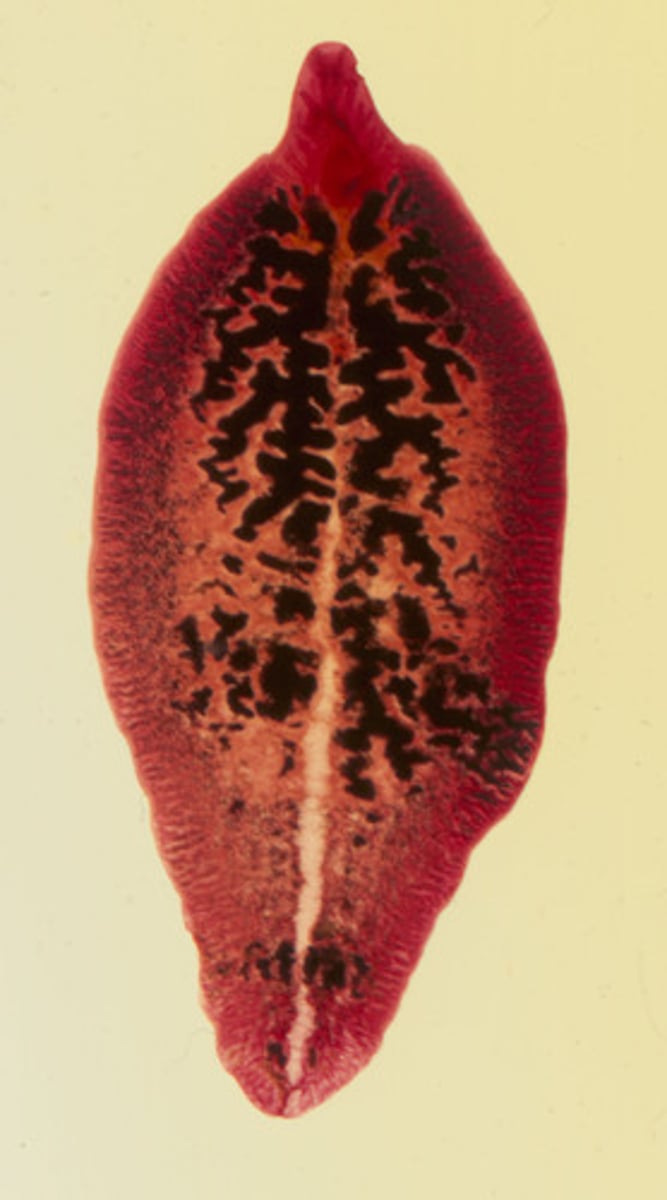
cercaria larvae of trematodes
